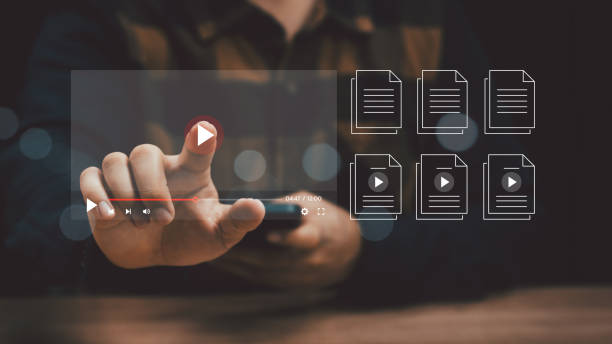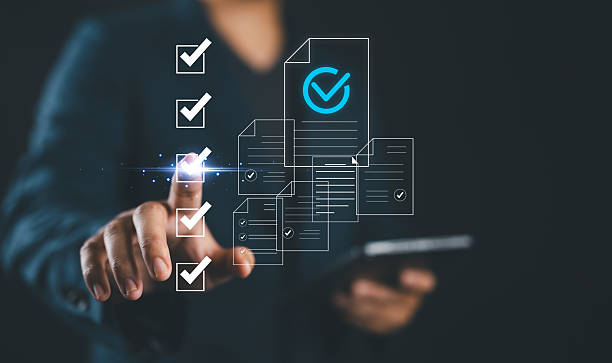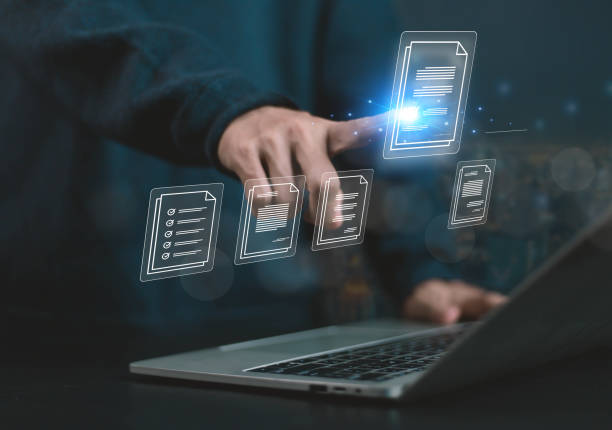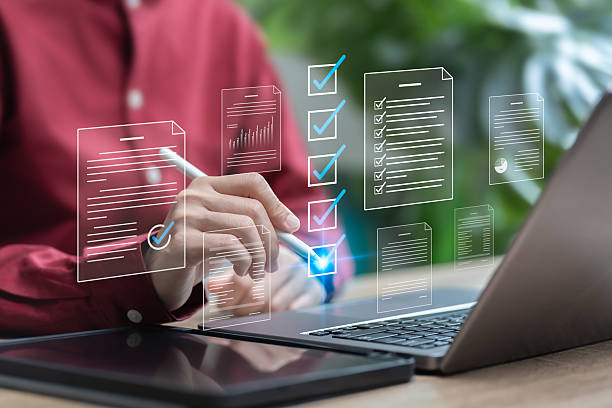An Introduction to the Dynamic World of On-Page SEO and Its Importance

#On-Page_SEO or On-page SEO, is one of the #most_important pillars of #website_optimization for search engines, referring to a set of actions performed within your website and on its pages.
The primary goal of these actions is to increase website visibility in search results and attract more organic traffic.
Unlike off-page SEO, which focuses on factors outside the website, on-page SEO (Internal SEO) is entirely within your control, allowing you to make changes and improvements.
This aspect of SEO includes optimizing titles, meta descriptions, headings, content, images, URL structure, and even page loading speed.
In fact, on-page SEO plays a vital role in sending clear signals to search engines so they can understand the topic and quality of your page, and ultimately, display it to relevant users.
Without a strong foundation in on-page SEO, even the best off-page SEO strategies cannot alone guarantee complete success.
The importance of search engine optimization in today’s competitive web space is undeniable, and on-page SEO acts as the backbone of this optimization.
This chapter provides an educational approach to on-page SEO and aims to familiarize you with its fundamental concepts.
We emphasize how, by optimizing each element of a page, you can significantly increase your site’s discoverability.
Understanding these explanatory concepts is essential for anyone looking to improve their site’s performance on Google.
On-page SEO directly influences how search engines interact with your content.
For example, if your page title is not properly optimized, search engines may not understand the main topic of the page, even if the content within the page is of very high quality.
This is where the importance of a comprehensive on-page SEO strategy becomes apparent.
Remember that SEO is a continuous process, and on-page SEO (Site SEO) is no exception.
By adhering to its principles, not only will your site’s ranking improve, but a better user experience will also be provided for visitors.
This can lead to a reduction in bounce rate and an increase in user time spent on your site, both of which are positive signals for search engines.
Furthermore, an optimized internal structure helps search engines index your valuable site pages faster and more completely, meaning more opportunities to be seen in search results.
Investing in on-page SEO is, in fact, an investment in the future of your online business, as organic traffic is always considered the most stable and high-quality type of traffic.
Is your current e-commerce website design causing you to lose customers and sales?
Rasaweb is your solution with modern and user-friendly e-commerce website designs!
✅ Significant increase in conversion rate and sales
✅ Strong branding and building customer trust
⚡ Get a free e-commerce website design consultation from Rasaweb!
Keywords, the Cornerstone of Every Successful On-Page SEO
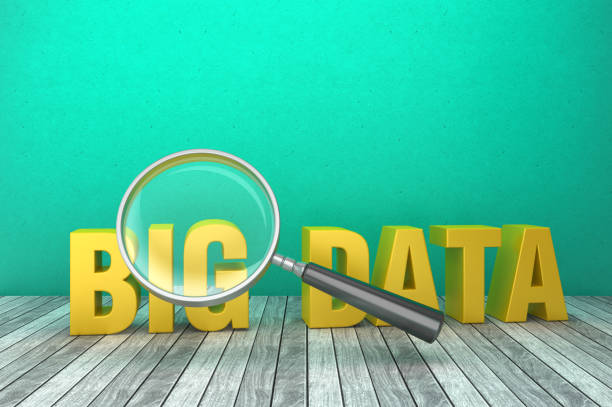
#Keyword_Research, without a doubt, is one of the #most_fundamental steps in any successful #On-Page_SEO strategy.
This process involves discovering the words and phrases your target audience uses in search engines to find information, products, or services related to your business.
A comprehensive keyword research provides you with deep insights into user needs and desires, paving the way for targeted content creation.
Choosing the right keywords means finding a balance between search volume (how often a word is searched) and the competitiveness of that word.
Keywords with high search volume and low competition are ideal, but finding them is not always easy.
Various tools such as Google Keyword Planner, Ahrefs, and Semrush can provide excellent guidance at this stage.
Additionally, analyzing competitor keywords and reviewing search results for your desired keywords offers valuable insights.
This process is not limited to just finding words; it also involves understanding the Search Intent behind each word.
Is the user looking for information (informational search), intending to buy (commercial search), or searching for a specific website (navigational search)? Answering these questions helps you create content that precisely meets the user’s needs.
For example, if a user is searching for “best laptop for students”, they need analytical and comparative content, not just a product page.
Your content should be explanatory and comprehensive, covering all aspects related to the keyword.
Using long-tail keywords can also be very effective, as these keywords, although having lower search volume, are usually more targeted and have higher conversion rates.
On-page SEO reaches its peak when every page of your website is optimized for one or more main keywords and related keywords.
This helps search engines correctly identify the relevance of your content to user queries.
Also, remember that keywords should be naturally integrated into the text, and “keyword stuffing” or excessive repetition should be avoided, as this practice not only negatively impacts user experience but can also be penalized by Google’s algorithms.
Optimizing Content and On-Page Elements for On-Page SEO
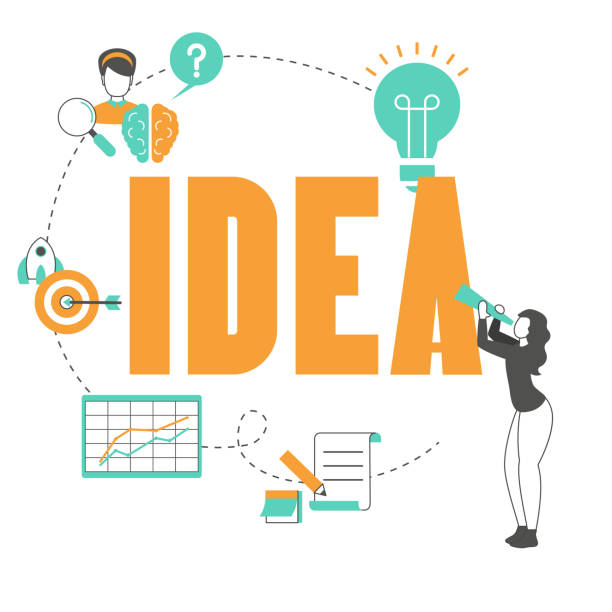
#On-Page_Element_Optimization forms the core of #On-Page_SEO.
These actions include precise adjustment of page titles (Title Tags), meta descriptions (Meta Descriptions), correct use of heading tags (H1-H6), and optimization of textual content.
The Title Tag is the first thing users see in search results and should include the main keyword of the page, be engaging and enticing to encourage users to click.
Meta descriptions, although not directly influencing ranking, play a significant role in click-through rate (CTR).
These descriptions should provide an appealing and accurate summary of the page’s content and also include the keyword.
Using the H1 tag for the main page title and H2, H3 tags for subheadings helps structure the content and improves readability for both users and search engines.
This is a specialized guide for organizing information that allows search engines to understand the hierarchy of your content.
In textual content, natural and logical use of keywords throughout the text is very important.
Avoid excessive repetition of keywords (Keyword Stuffing), which can lead to site penalties.
Instead, use synonyms, related keywords (LSI Keywords), and family-related phrases.
This approach shows search engines that you have provided comprehensive and rich content on the topic.
The explanatory nature of the content and addressing potential user questions doubles its value.
For example, if your topic is “gaming laptop”, don’t limit yourself to just this keyword; also discuss “graphics card for gaming”, “suitable processor for gaming”, and “sufficient RAM for gaming.”
Furthermore, optimizing URLs for brevity, readability, and keyword inclusion is also a crucial part of on-page SEO.
Clean and structured URLs like yourwebsite.com/blog/seo-internal-guide are better than yourwebsite.com/?p=123.
Ultimately, on-page SEO is not just about keyword placement, but about creating an exceptional user experience that search engines also reward.
The table below shows the main on-page elements and their importance:
| Element | Description | Importance for SEO |
|---|---|---|
| Title Tag | The title visible in search results and browser tab | High (Directly affects ranking and CTR) |
| Meta Description | A short summary of content in search results | Medium (Influences CTR, not direct ranking) |
| Heading Tags (H1-H6) | Content structurer (titles and subtitles) | High (Helps search engines understand content structure) |
| Text Content | The main body of page information | Very High (Quality, depth, and relevance are vital) |
| Friendly URL | Page address | Medium (Helps with readability and topic understanding) |
Producing High-Quality and Engaging Content, the Brains Behind On-Page SEO
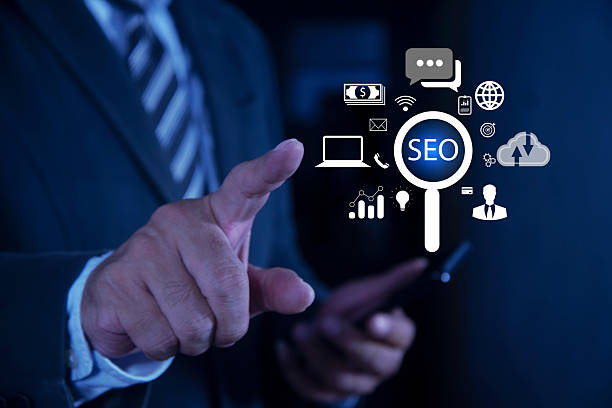
#High-Quality_Content is the beating heart of every successful #On-Page_SEO strategy.
Search engines, especially Google, are constantly striving to provide the best and most relevant answers to users, which means content that fully meets user needs.
High-quality content doesn’t just mean being lengthy; it includes depth, accuracy, credibility, and attractiveness.
This content must be #original, provide new information, or address a topic in an innovative way.
Avoid repetition and strive to give complete and comprehensive answers to user questions.
In fact, your content should be thought-provoking; meaning it not only answers questions but also raises new questions in the user’s mind that require further exploration, encouraging them to stay longer on the site.
This approach also helps create Evergreen Content that retains its value over time.
To produce SEO-friendly content, you must first understand the user’s search intent.
Is the user looking for an explanatory guide? Do they want to learn about a complex topic in an entertaining way? Or are they looking for news information about a specific event? The answers to these questions determine the structure and tone of your content.
For example, an educational article on “how to set up a website” should have clear, step-by-step instructions, while a news blog post about the latest Google algorithm update should be analytical and up-to-date.
Using multimedia elements such as images, videos, and infographics can help increase content appeal and boost user time spent on the page.
Also, logical organization of content with subheadings, lists, and short paragraphs improves readability.
Don’t forget that your content should be written for humans, not just for search engines.
Ultimately, content that is valuable to users will naturally be valued by search engines as well, and this is the cornerstone of sustainable on-page SEO.
Regularly updating old content also demonstrates site activity and maintains its relevance to current topics, showing search engines that your site is dynamic and alive.
Are you losing business opportunities because of an outdated website? With Rasaweb, solve the problem of not attracting potential customers through your website forever!
✅ Attract more high-quality leads
✅ Increase brand credibility in the eyes of customers
⚡ Get a free corporate website design consultation!
Images and Multimedia in On-Page SEO

In today’s visual world, #images and #multimedia play a vital role in attracting audiences and enhancing #on-page_optimization.
Image optimization is not just about reducing their size; it also involves the correct use of textual attributes so that search engines can understand their content.
The first and most important step is to use descriptive Alt Text.
This text helps search engines (and visually impaired users) understand the image content and appear in image search results.
Alt text should include relevant keywords but avoid overstuffing.
For example, if you have an image of a red laptop, the Alt Text should include “red gaming laptop” and not just “laptop.”
This is a specialized tip that is often overlooked and can significantly impact the visibility of your images in search.
In addition to Alt Text, the image file name is also important.
Use descriptive and keyword-inclusive names (e.g., seo-internal-optimization.jpg instead of IMG001.jpg).
Compressing images to reduce their size, without compromising quality, is crucial for page loading speed.
Various tools like TinyPNG or Compressor.io can assist you in this process.
Page loading speed is one of the important ranking factors, and heavy images can severely slow down your site.
Choosing the correct image format (like WebP for the web, which is Google’s new format with better compression) can also help improve performance.
Using videos and infographics can also help increase user time spent on the page and reduce bounce rate, which are positive signals for search engines.
For videos, you can use Schema Markup VideoObject tags to help search engines better understand their content.
Optimizing these multimedia elements is an inseparable part of a comprehensive on-page SEO strategy and leads to overall improvement in user experience and site discoverability.
These explanatory and highly effective actions should not be overlooked.
Internal Linking: The Vital Veins of On-Page SEO
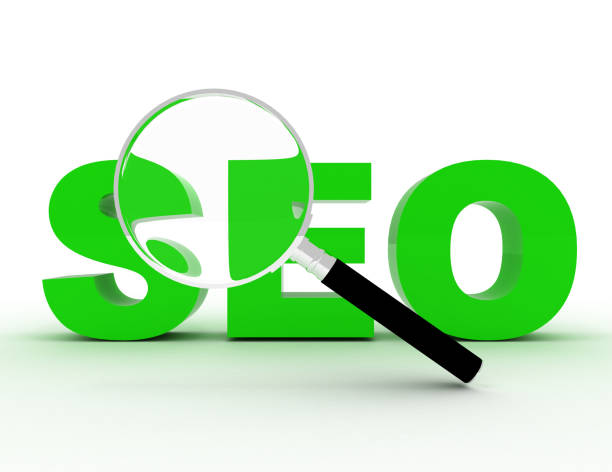
#Internal_Linking is one of the powerful and often underestimated tools in an #on-page_SEO (on-page optimization) strategy.
Internal links are hyperlinks that connect one page on your website to another page on the same website.
These links play a vital role in several key aspects of SEO: First, they help search engines understand your site’s structure and crawl and index different pages.
Second, internal links distribute Link Equity across your entire website.
When a strong page has many links to other pages, this ranking power is passed on to those pages, helping deeper pages on your site also appear better in search results.
This is an educational guide to improving the flow of authority within your site, demonstrating the importance of correct information architecture.
The third and perhaps most important role of internal linking is improving user experience (UX).
Relevant and logical links encourage users to spend more time on your site and explore more pages.
This helps reduce bounce rate and increase time on site, which are positive signals for search engines.
When creating internal links, pay attention to the #Anchor_Text used.
Anchor text should be descriptive and include keywords relevant to the destination page.
Avoid generic anchor texts like “click here” and instead use phrases like “complete guide to on-page SEO.”
Try to place internal links within relevant and natural content, not just for SEO.
For example, if you are writing about “website speed optimization”, you can link to a page that “explains” speed testing tools.
Also, ensure that the number of internal links on each page is reasonable and avoid creating excessive links that can confuse the user.
A strong internal linking strategy helps search engines and users view your website as a credible and organized information resource.
Technical Aspects of On-Page SEO: Speed, Security, and User Experience
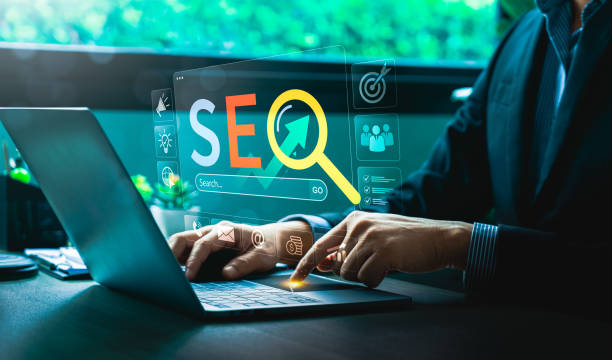
In addition to content and structure, #technical_aspects play a significant role in the success of your site’s #technical_SEO.
Website loading speed is one of the most critical factors that directly impacts user experience and ranking.
Today’s users are impatient, and if your site loads slowly, they will quickly abandon it.
According to Google’s research, even a one-second delay in page loading can significantly increase the bounce rate.
Tools like Google PageSpeed Insights, GTmetrix, and Pingdom Tools can help you identify speed issues.
Image optimization, browser caching, file compression (Gzip), and using Content Delivery Networks (CDN) are among the specialized solutions for increasing speed, each of which can have a significant impact.
Website security, especially the use of HTTPS protocol (indicated by a green lock next to the site address), is another important factor.
Google has explicitly stated that HTTPS is a ranking factor and is essential for protecting user information.
Insecure websites may be displayed as “not secure” by browsers, which severely affects user trust and site traffic.
Mobile-Friendliness is now an absolute necessity.
Given the increasing number of searches via mobile devices, your site must display correctly on all devices and provide a suitable user experience.
This is a very important guide in the mobile era, as Google uses a Mobile-First Indexing approach.
Using Structured Data (Schema Markup) also helps search engines better understand your content and display it in richer forms (Rich Snippets) in search results.
These technical factors provide a stable foundation for your on-page SEO and help you appear more credible and accessible in the eyes of search engines and users.
| Technical Factor | Description | Impact on SEO and UX |
|---|---|---|
| Site Loading Speed | The time required for a page’s content to fully load | Critical (Ranking factor, reduces bounce rate) |
| HTTPS Protocol | Security of communication between user and server (encryption) | Very Important (Ranking factor, increases user trust) |
| Mobile Compatibility | Correct display and appropriate user experience on mobile | Essential (Google’s first index is mobile) |
| Structured Data (Schema Markup) | Code that helps search engines understand content | Important (Increases visibility in Rich Snippets) |
User Experience (UX) and Its Role in On-Page SEO

#User_Experience (UX) is increasingly intertwined with #On-Page_SEO.
Search engines are increasingly focusing on signals related to user interaction with the site.
An excellent user experience not only keeps users on your site but also helps them easily find the information they need and achieve their goals.
Factors such as low bounce rate, high time on page, and interaction with page elements (like clicking on links and buttons, scrolling to the bottom of the page, and consuming content) send positive signals to search engines, indicating user satisfaction with your content.
This can lead to an improvement in your search results ranking.
In fact, the ultimate goal of on-page SEO is to provide the best possible user experience, as Google aims to deliver the best answers to its users, and user experience is one of the most important factors in determining the “best answer.”
Responsive Design, easy and intuitive navigation (clear menus and simple paths), high readability (using appropriate fonts, sufficient white space between paragraphs, and short paragraphs), and the absence of intrusive pop-ups and excessive advertisements are among the important UX aspects that affect SEO.
If your site is difficult to navigate or its content is hard to read, users will quickly leave it.
This creates a thought-provoking question: Is your site truly designed for users, or just for search engines? The answer to this question is key.
Also, ensuring that all links and buttons work correctly and there are no 404 pages or other errors is of high importance.
Reviewing the XML sitemap and robots.txt file can also help in this regard, so that search engines also follow the correct path.
A general guideline for improving UX is to put yourself in the user’s shoes and try to understand the journey they take on your site.
Remember, search engines aim to reward websites that provide the best experience for their users, and this implies a deep overlap between UX and on-page SEO.
Are you losing business opportunities because of an outdated website? With Rasaweb, solve the problem of not attracting potential customers through your website forever!
✅ Attract more high-quality leads
✅ Increase brand credibility in the eyes of customers
⚡ Get a free corporate website design consultation!
Measurement and Analysis: Vital Steps in On-Page SEO Optimization

#Success in #On-Page_SEO is nearly impossible without continuous #measurement and #analysis.
Tools like Google Analytics and Google Search Console provide valuable data on your site’s performance.
Google Analytics helps you understand user behavior: which pages they visit, how long they stay on the site, their bounce rate, and where they came from.
This information is crucial for analytical decisions and improving user experience.
For example, if you notice that a particular page has a very high bounce rate, you might need to revise its content, improve its design, or adjust its Call-to-Action (CTA).
Analyzing User Journeys can also reveal weaknesses in site navigation.
Google Search Console is a specialized tool for monitoring your site’s performance in Google search results.
This tool shows you which keywords your site appears for in search results, what your click-through rate (CTR) is, and whether search engines have any problems crawling and indexing your pages.
Also, reports on Core Web Vitals and mobile compatibility issues are available in this tool, which directly impact on-page SEO.
These tools provide you with an educational guide to help you identify and resolve technical and content issues on your site.
Regular analysis of this data allows you to continuously optimize your on-page SEO strategy and stay informed about the latest trends and search engine requirements.
Without these analyses, real improvement in your site’s ranking and traffic will be difficult.
This continuous and explanatory monitoring helps you stay one step ahead and make the necessary changes to maintain and improve your site’s position.
Future Trends and Advanced On-Page SEO

The world of #SEO is constantly evolving, and #On-Page_SEO is no exception.
Understanding future trends and preparing for them is key to maintaining a competitive advantage.
One of the most important recent trends is the increased focus on #Artificial_Intelligence and machine learning in search engine algorithms like BERT and MUM.
This means that content quality, semantic relevance, and user experience have become more important than ever.
Producing comprehensive, in-depth, and unique content that truly addresses user needs has gained double importance.
Search engines are transforming into answer engines, not just document finders.
This means that your content must be structured to directly answer user questions and provide real value.
Voice Search is also growing and impacts how #on-page_optimization is done.
Users employ more natural language in voice searches, and this increases the need to focus on long-tail keywords and conversational content.
Also, #Core_Web_Vitals have been introduced by Google as key page experience metrics, and optimizing them is essential for on-page SEO.
These metrics include loading speed (Largest Contentful Paint), interactivity (First Input Delay), and visual stability (Cumulative Layout Shift).
Using Structured Data (Schema Markup) to help search engines better understand your content is also a specialized and growing strategy that can lead to the display of Rich Snippets in search results.
By being aware of these news trends and implementing analytical and advanced strategies, you can ensure that your site’s on-page SEO is ready for the future and will continue to attract high-quality organic traffic.
These developments present both new thought-provoking content and new opportunities for innovation that can differentiate your site from competitors.
Frequently Asked Questions
| Row | Question | Answer |
|---|---|---|
| 1 | What is On-Page SEO? | On-page SEO refers to a set of actions performed within a website (on its pages) to improve its ranking in search engine results. This includes optimizing content, site structure, and HTML codes. |
| 2 | Why is On-Page SEO important? | On-page SEO helps search engines better understand page content and determine if that page is relevant and valuable for user searches. This better understanding leads to higher rankings. |
| 3 | What is the first and most important step in On-Page SEO? | Keyword Research is the most important initial step. By finding appropriate keywords, targeted content relevant to user needs can be produced. |
| 4 | What is the role of the Title Tag in On-Page SEO? | The Title Tag is one of the most important ranking factors and should include the main keyword. This tag is displayed as the page title in search results and affects the click-through rate (CTR). |
| 5 | What is the importance of the Meta Description? | The Meta Description does not directly influence ranking, but by providing an attractive summary of the page’s content in search results, it can encourage users to click, thereby increasing the click-through rate (CTR). |
| 6 | Why is using headings (H1, H2, etc.) important in content? | Headings help structure content and improve readability for users and search engine crawlers. Using keywords in headings also helps search engines better understand the topic. |
| 7 | What does Image Optimization in On-Page SEO include? | It includes compressing images to reduce size, using descriptive and relevant file names, and filling the Alt tag (alternative text) with relevant keywords to help search engines understand the image content. |
| 8 | What is Internal Linking in On-Page SEO? | Internal linking refers to creating links between different pages within a website. This helps distribute page authority (Link Equity), improve user experience, and assist search engine crawlers in discovering new pages. |
| 9 | Why is Page Speed important for On-Page SEO? | Page loading speed is a direct ranking factor and significantly impacts user experience. Slow pages can lead to an increased bounce rate and reduced user engagement. |
| 10 | What role does quality content play in On-Page SEO? | Quality, comprehensive, unique, and valuable content for the user, is the core of on-page SEO. This content not only attracts and retains users but also sends positive signals to search engines, helping achieve better rankings. |
And other services of Rasaweb Advertising Agency in the field of advertising
Smart Advertising Campaign: Designed for businesses seeking to improve SEO ranking through intelligent data analysis.
Smart Google Ads: A new service for increasing customer acquisition through the use of real data.
Smart Google Ads: A combination of creativity and technology to increase sales through custom programming.
Smart Sales Automation: A fast and efficient solution to increase click-through rates with a focus on marketing automation.
Smart Marketplace: An innovative platform for improving customer behavior analysis with custom programming.
And over a hundred other services in the field of internet advertising, advertising consulting, and organizational solutions.
Internet Advertising | Advertising Strategy | Advertorials
Resources
- Advanced On-Page SEO Articles
- Technical SEO Training for Beginners
- Comprehensive Keyword Research Guide
- Principles and Techniques of Internal and External Linking
? Elevate your business with Rasaweb Afarin Digital Marketing Agency’s services! At Rasaweb Afarin, we specialize in providing comprehensive digital solutions for your business’s growth and development. From professional website design and SEO to social media management and targeted advertising campaigns, we provide everything you need to gain visibility and succeed in the online space.
📍 Tehran, Mirdamad Street, Next to Central Bank, Southern Kazeroun Alley, Ramin Alley, No. 6

